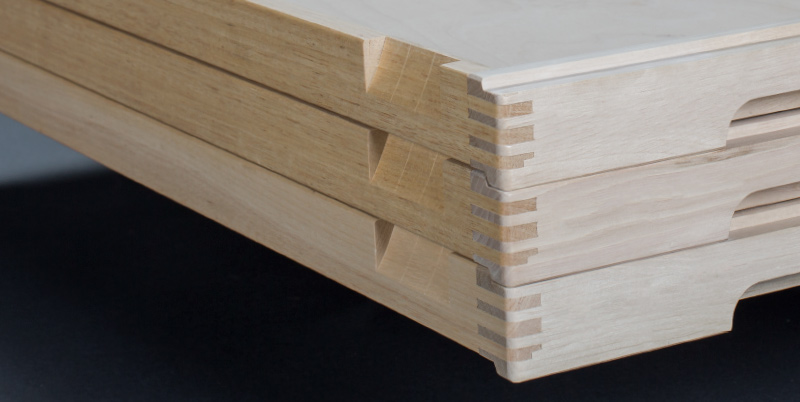quality.Liqueur Trays
Besides starch trays, Treiber Trays manufactures the whole range of trays used in the confectionery industry, such as liqueur trays. The feetless liqueur trays are the ideal solution for the crystallization process of your crust liqueur products.


For the manufacture of our products, we exclusively process natural, environmentally compatible wood materials and materials of the highest quality.
All types of wood used are bought as untreated cuttings and further processed without any surface treatment. The materials used and their processing quality guarantee an optimum strength of the powder box and absolute dimensional and geometrical stability.
One of the essential prerequisites for the dimensional and geometric stability of the powder boxes is the drying of the wood. For this purpose, the solid wood is dried very carefully and gradually to the lowest possible degree of moisture before further processing in its own drying chamber, which is 6% and thus adapted to the later use moisture of the boxes in the mogul plants.
Wood.Sustainably managed
- Treiber Trays uses only premium wood materials from sustainable managed resources
- The beech comes from France and Germany. The birch is chopped in the endless expanses of Siberia and the bamboo grows in China
- All wooden trays come with a certificate
Natural product. Guaranteed food safety
- Wood is a food-safe, natural product
- Its use rules out any risk of potentially hazardous glass fibers or plastic abrasion in the starch
Easy disposalEnvironmentally friendly
- The disposal of plastic trays is a difficult and expensive task and needs a recycling concept
- In contrast, the natural product wood is easy to dispose of
Antibacterial propertiesOutstanding hygiene
- Wood has a natural antibacterial effect
- This originates from specific naturally active substances that help the tree to survive in hostile environments as well as the hygroscopic properties of wood
- Numerous scientific studies have proven the outstanding hygienic performance of wood materials (e.g. Milling et al., 2005; Schönwalder et al., 2002)




